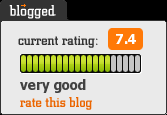
It is incumbent upon libraries, both academic and public, to build, possess, and cultivate their collections of Latino Poetry for a variety of reasons.
For starters, Latinos are poised to become the largest minority in the U.S.; in fact, "the U.S. Census Bureau claims that by the year 2050, a full quarter of the U.S. population will be of Latino origin; that is, nearly 100 million people will be able to trace their ancestry to the Spanish-speaking, Latin American, and Caribbean worlds" (Suarez-Orozco & Paez, 2002, pg. 2). It might become increasingly difficult for Libraries to say there is little interest in Latino Poetry when one in four Americans is Latino themselves.
Latino Poetry extensively uses code switching between Spanish and English to convey meaning, significance, and political affinities. There are myriad reasons why Latino Poets would choose to include Spanish in their English poems, and vice versa; however, this convention is mostly utilized by Latino Poets to emphasize the duality of their Latino identity. Latinos are neither here nor there; they are an ethnic label that is in the process of defining itself and bridging binary racial boundaries imposed by the U.S. culture. Because the parameters of what a Latino actually is are constantly changing, Latino Poetry is constantly evolving to accommodate its taxonomists.
Additionally, Latinos retain their use of Spanish more than any other ethnic group. This means that as a whole, Latinos deploy Spanish more than other ethnic groups. And because Latino Poetry has high incidences of Spanish intermingled with the English text, the language serves not just as "literature" but as a conduit and enhancer of Latino culture. For example, "Latino families are distinct in their extensive use of Spanish at home. Recent data show that in their homes, about 83 percent of immigrant Latino youth use their native language primarily or exclusively" (Suarez-Orozco & Paez, 2002, pg. 8). More importantly, "Even third generation bilingualism is relatively higher among Latinos than among other ethnic groups" (Suarez-Orozco & Paez, 2002, pg. 8).

.png)

No comments:
Post a Comment